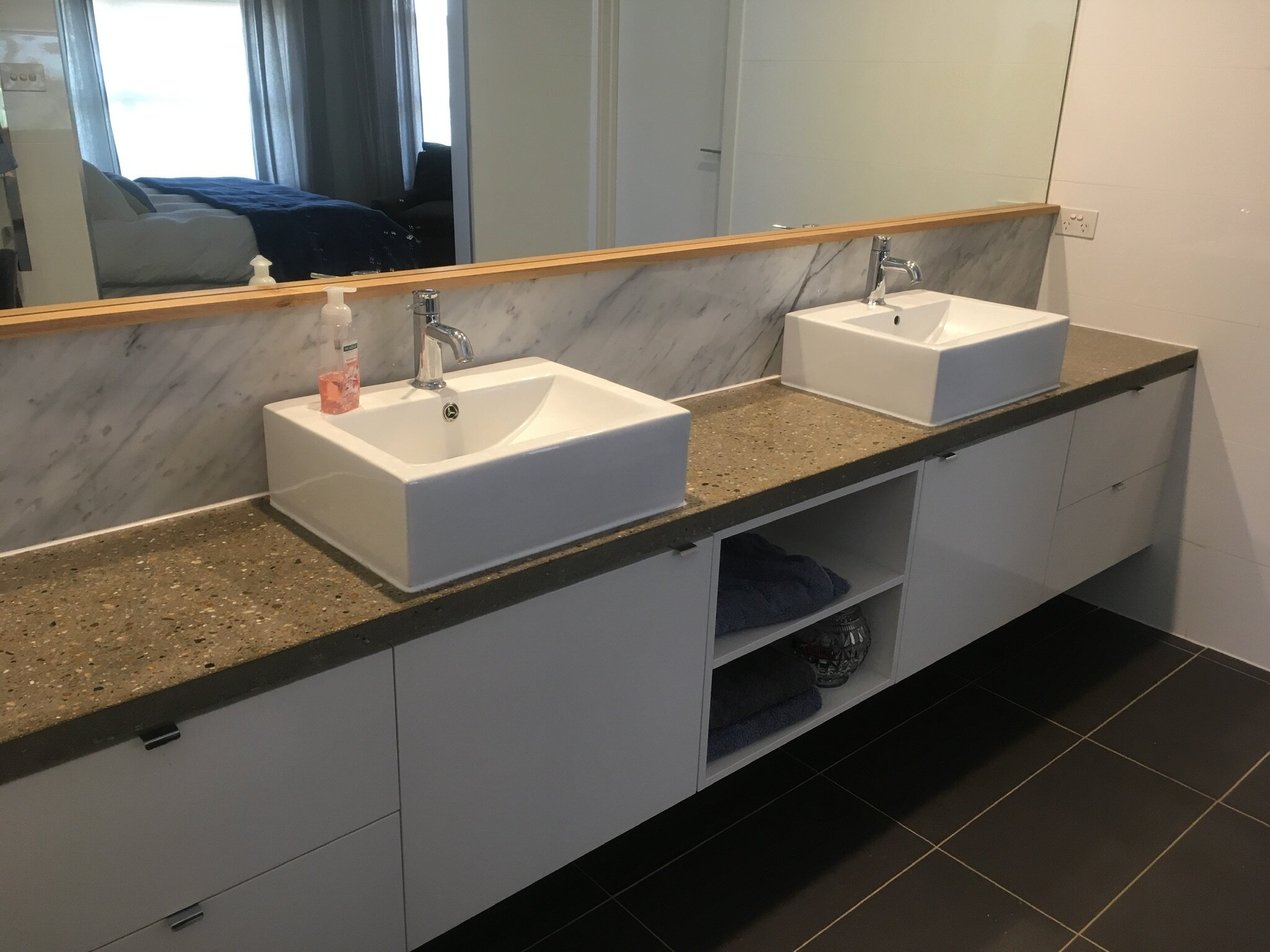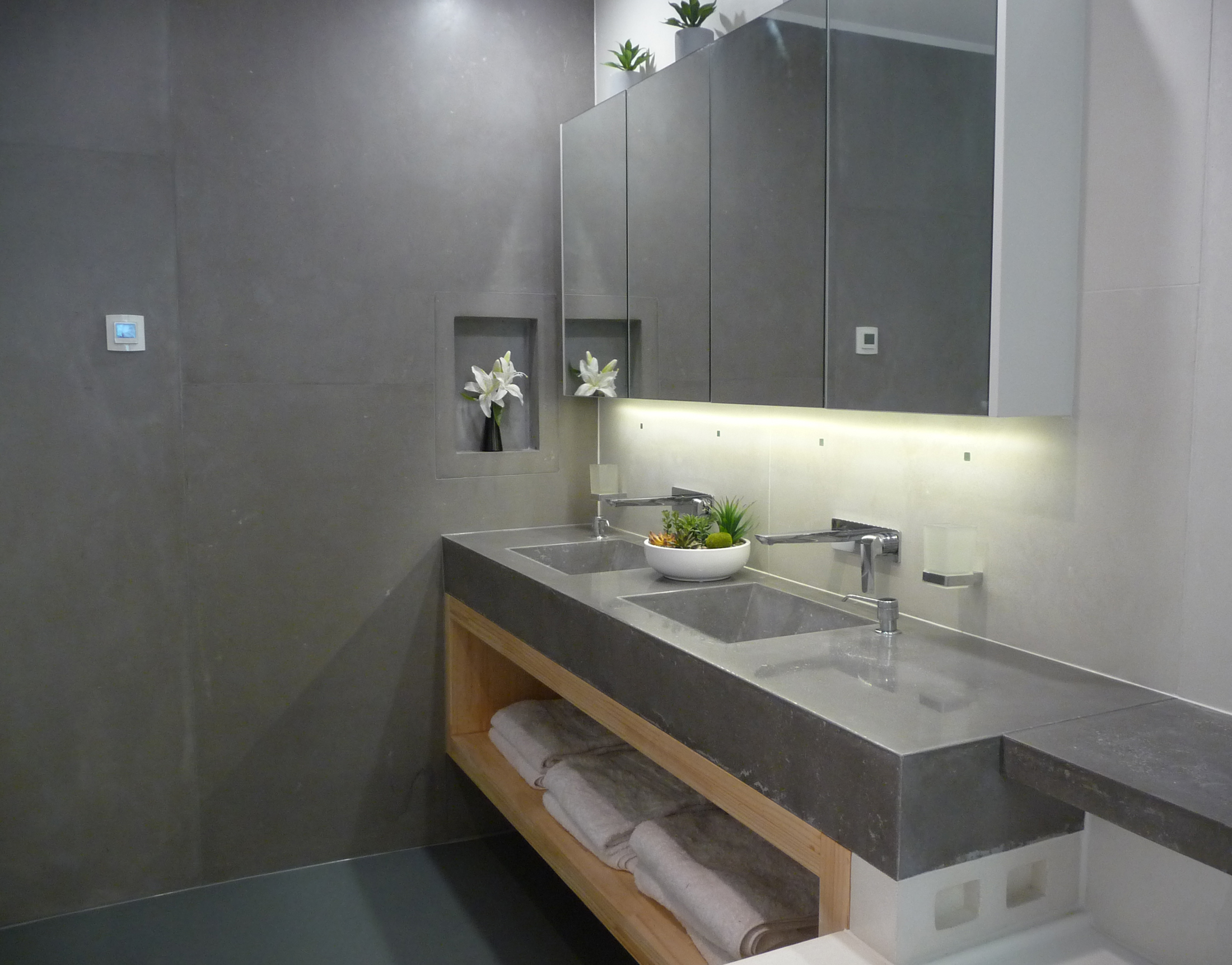Modern Concrete Bathroom Vanity Design Trends

Concrete bathroom vanities have evolved significantly, transitioning from utilitarian to sophisticated design elements that elevate bathroom aesthetics. These vanities have become a popular choice for homeowners seeking unique and durable solutions.
Evolution of Concrete Bathroom Vanities
The use of concrete in bathroom vanities has shifted from purely functional to a design statement. Early concrete vanities were often associated with industrial or minimalist styles, characterized by their rough, unfinished surfaces. However, advancements in concrete technology and design trends have led to a broader range of styles and finishes.
Popular Design Elements
Concrete bathroom vanities offer a canvas for various design elements that cater to different aesthetic preferences.
- Geometric Shapes: Concrete’s malleability allows for the creation of intricate geometric shapes, adding a modern touch to the bathroom. For example, a vanity with a hexagonal countertop or a triangular base can be visually striking.
- Minimalist Lines: The clean lines and simplicity of concrete vanities complement minimalist bathroom designs. Vanities with sleek, straight edges and minimal ornamentation create a sense of tranquility and sophistication.
- Integrated Sinks: Concrete vanities seamlessly integrate sinks, creating a unified and elegant design. This eliminates the need for separate sink basins, contributing to a minimalist and streamlined aesthetic.
Concrete Finishes
Concrete offers a range of finishes that enhance the visual appeal and functionality of bathroom vanities.
- Polished: Polished concrete surfaces create a sleek and reflective finish, enhancing the natural beauty of the material. They are also easy to clean and maintain.
- Honed: Honed concrete surfaces provide a smooth and matte finish, offering a subtle elegance. They are less reflective than polished finishes, creating a more understated look.
- Textured: Textured concrete surfaces add depth and visual interest to bathroom vanities. They can range from subtle patterns to bold, tactile finishes, offering a variety of design possibilities.
Benefits of Choosing a Concrete Bathroom Vanity

Concrete bathroom vanities are becoming increasingly popular, offering a unique blend of durability, aesthetics, and sustainability. These vanities stand out as a practical and stylish choice for modern bathrooms.
Durability and Longevity
Concrete is renowned for its exceptional durability, making it an ideal material for bathroom vanities. Concrete vanities are highly resistant to scratches, stains, and moisture, ensuring they withstand the rigors of daily use and retain their pristine appearance for years to come. The dense, non-porous nature of concrete prevents water absorption, minimizing the risk of warping, cracking, or mold growth.
Aesthetic Appeal
Concrete’s natural beauty and versatility make it a captivating choice for bathroom vanities. Its inherent ruggedness adds a touch of industrial chic to any bathroom design, while its smooth, polished finish creates a modern and sophisticated ambiance. Concrete vanities can be customized with various colors, textures, and finishes, allowing homeowners to personalize their bathrooms to reflect their unique style.
Sustainability
Concrete is a sustainable material with a lower environmental impact compared to other vanity materials. It is readily available and can be produced using recycled materials, reducing the need for virgin resources. Concrete vanities are also highly durable and long-lasting, minimizing the need for frequent replacements and reducing waste generation.
Considerations for Installing a Concrete Bathroom Vanity

Installing a concrete bathroom vanity adds a touch of modern elegance and durability to your space. However, careful planning and execution are essential for a successful installation and long-lasting enjoyment. This section explores the key considerations for installing a concrete bathroom vanity, encompassing selection, installation, and maintenance.
Choosing the Right Concrete Vanity, Modern concrete bathroom vanity
The selection of a concrete vanity should align with your bathroom’s design and your specific needs. Consider these factors:
- Size: Measure your bathroom space carefully to determine the ideal size for your vanity. A vanity that is too large will overwhelm the space, while one that is too small will be cramped and impractical.
- Shape: Concrete vanities come in various shapes, from classic rectangular designs to more modern, geometric forms. Choose a shape that complements the overall aesthetic of your bathroom.
- Storage Options: Consider your storage needs. Some concrete vanities offer ample drawer space, while others may have open shelves or a combination of both. Choose a vanity with sufficient storage to accommodate your bathroom essentials.
Installation Process
The installation of a concrete bathroom vanity involves a few crucial steps to ensure a secure and watertight installation:
- Preparation: Clear the area where the vanity will be installed and ensure the floor is level. Prepare the plumbing connections for the sink and faucet.
- Placement: Position the vanity in its desired location and make any necessary adjustments to ensure it is level and plumb.
- Securing: Secure the vanity to the wall using appropriate fasteners. Consider using heavy-duty anchors for added stability, especially if the vanity is particularly heavy.
- Plumbing: Connect the sink and faucet to the plumbing lines. Ensure all connections are tight and leak-free.
- Sealing and Waterproofing: Apply a sealant to the underside of the vanity and around the sink to prevent water damage. Consider using a waterproof sealant specifically designed for concrete surfaces.
Maintaining Your Concrete Bathroom Vanity
Proper maintenance is crucial for preserving the beauty and durability of your concrete bathroom vanity. Follow these steps for routine care:
- Cleaning: Clean the vanity regularly with a mild soap and water solution. Avoid using harsh chemicals or abrasive cleaners that can damage the concrete surface.
- Sealing: Apply a sealant to the vanity’s surface every few years to protect it from stains and water damage. The frequency of sealing depends on the specific sealant used and the level of wear and tear the vanity experiences.
- Repairing: If any cracks or chips develop in the concrete surface, repair them promptly using a concrete patching compound. Ensure the patch is smooth and sealed to prevent further damage.
